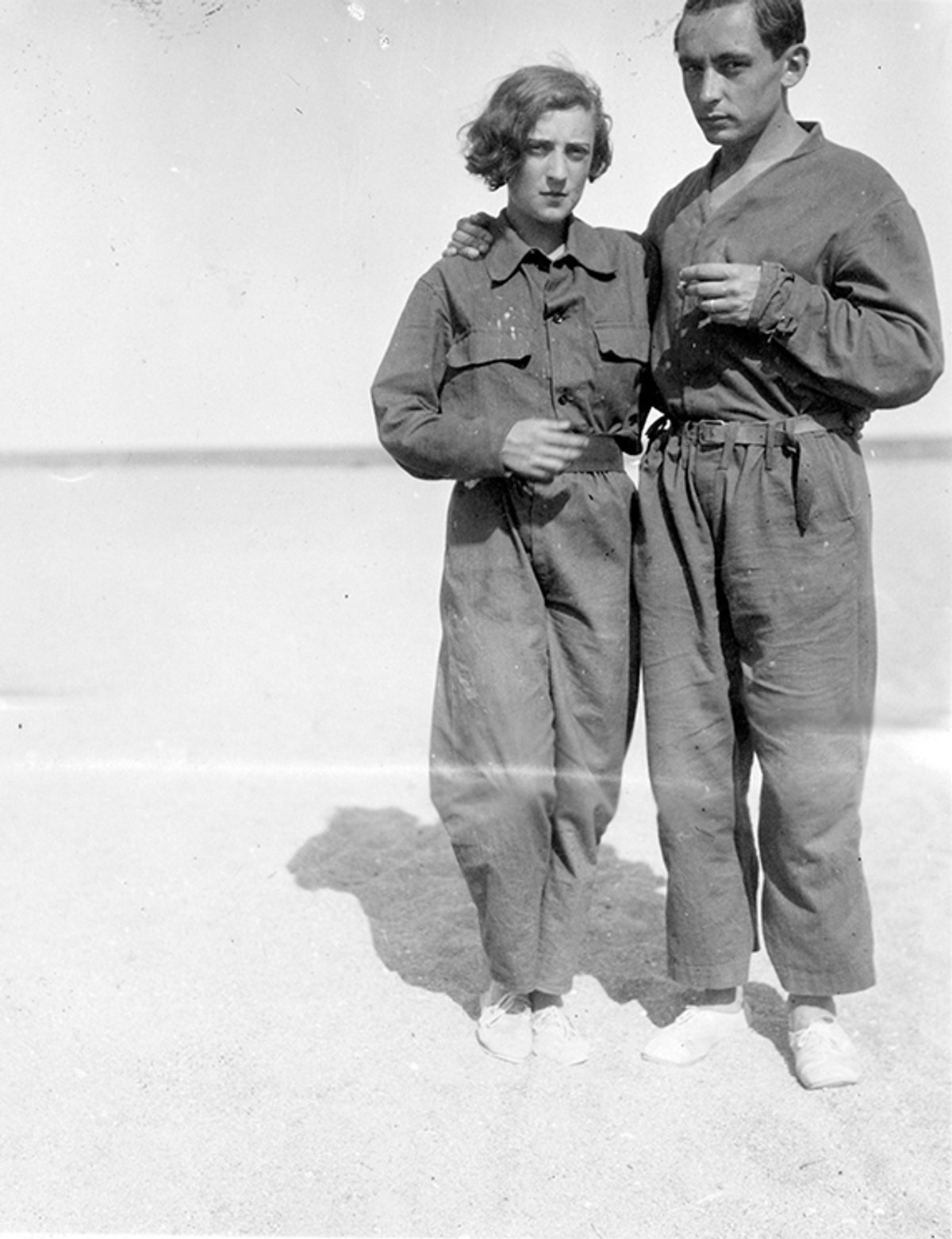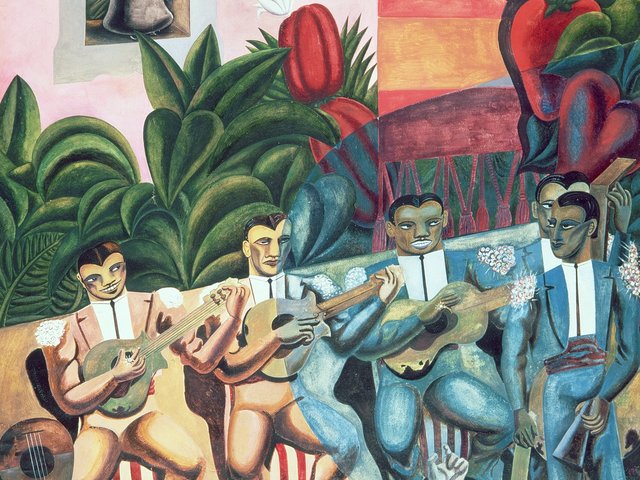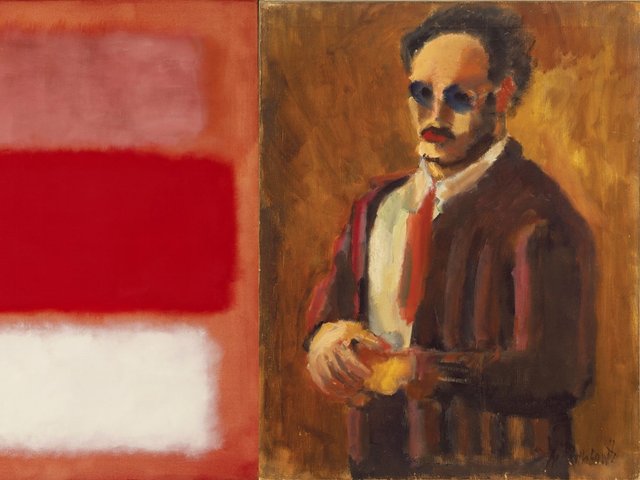The youthful infatuation, creative partnership, break-up and Burton-Taylor-esque reunion of Anna-Eva Bergman and Hans Hartung is one of the untold love stories of the 20th-century avant-garde. While at the height of his career Hartung was celebrated as a prominent figure in the Art Informel movement, a largely European response to Abstract Expressionism, Bergman’s work has been neglected despite her significant contributions to an abstract vocabulary of art inspired by nature. The artists are the subject of a new dual exhibition at the Kunsthalle Praha, Anna-Eva Bergman & Hans Hartung: And We’ll Never Be Parted.
After studying at art schools in Oslo and Vienna, the Norwegian Bergman enrolled at the Académie André Lhote in Paris. She met the German-born Hartung in 1929, and they married in the same year. They lived from 1933 to 1934 in Menorca, where Bergman was inspired by the dramatic coastal landscape of waves crashing onto the crags. Both artists were fascinated by mathematical approaches such as gridded systems to organise compositions and the golden ratio, which they believed offered a timeless and universal aesthetic. Soon, though, there was trouble in paradise. Bergman became beset by ill health, which required operations and convalescences in Berlin, Paris and the French Riviera. The couple divorced in 1938.
Hunted by the Gestapo
While Hartung joined the French Foreign Legion in the Second World War, during which he was pursued as a traitor by the Gestapo and ultimately lost a leg in battle, Bergman returned to Norway. In the summer of 1950, she travelled to the Lofoten Islands and Finnmark on the country’s northern edge, and experimented with tempera to represent the rugged topography and transparency of the coastline in its extraordinary perpetual light.
Although Bergman and Hartung had both remarried, they reunited in 1952 and moved into a studio back in Paris. There they furthered their experiments with mathematics and abstraction, and fell in with the postwar milieu of Terry Haass, Germaine Richier and Pierre Soulages.
Explosive productivity of the reunion years
“[Their] togetherness was unique, allowing both artists to develop completely distinct styles while sharing living spaces, travels and over-arching themes,” the curators Theo Carnegy-Tan and Pierre Wat write in the exhibition’s catalogue, and “even when they separated, between 1938 and 1952, the apparent isolation in which the two artists worked served as an incubator for the explosive productivity of their reunion years.”
In 1973, the couple moved to the outskirts of Antibes, remodelling their house and studio in a Modernist style. The estate is now managed by the Hartung Bergman Foundation, which maintains a public display of the works of both artists, and has supported the exhibition in Prague. And We’ll Never Be Parted is billed as the first major museum show to place the two artists in dialogue, featuring paintings from across their careers, as well as sketches, archival material and mutual gifts.
• Anna-Eva Bergman & Hans Hartung: And We’ll Never Be Parted, Kunsthalle Praha, Prague, 5 June-13 October




